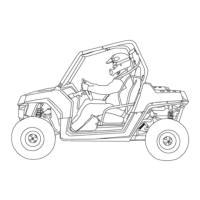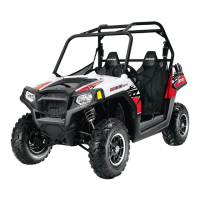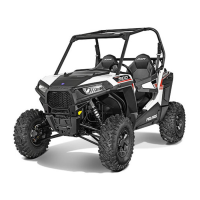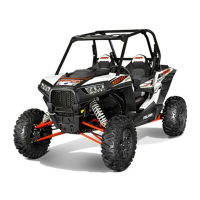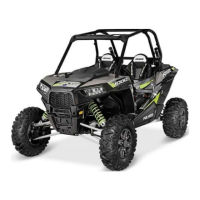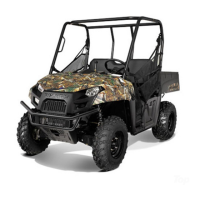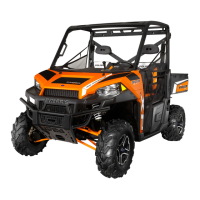2.22
MAINTENANCE
Cooling System Pressure Test
Refer to Chapter 3 for cooling system pressure test procedure.
Cooling System Hoses
1. Inspect all hoses for cracks, deterioration, abrasion or
leaks. Replace if necessary.
2. Check tightness of all hose clamps.
Radiator
1. Check radiator (A) air passages for restrictions or damage.
2. Carefully straighten any bent radiator fins.
3. Remove any obstructions with compressed air or low
pressure water.
Coolant Drain / Radiator Removal
Coolant Drain
1. Remove the front hood.
2. Slowly remove the pressure cap to relieve any cooling
system pressure.
3. Place a suitable drain pan underneath the T-fitting on the
front RH side of the vehicle.
4. Drain the coolant from the radiator by removing the lower
engine inlet hose from the T-fitting. Properly dispose of the
coolant.
5. Allow coolant to completely drain.
CAUTION
Do not over-tighten hose clamps at radiator, or
radiator fitting may distort, causing a restriction
to coolant flow. Radiator hose clamp torque is
36 in. lbs. (4 Nm).
Recovery
Filler Neck
T-Connector
Bottle
A
Flush radiator fins
in this direction
CAUTION
Washing the vehicle with a high-pressure
washer could damage the radiator fins and
impair the radiators effectiveness. Use of a
high-pressure washer is not recommended.
WARNING
Never drain the coolant when the engine and
radiator are warm or hot. Hot coolant can cause
severe burns. Allow engine and radiator to cool.
T-Fitting
Drain Here

